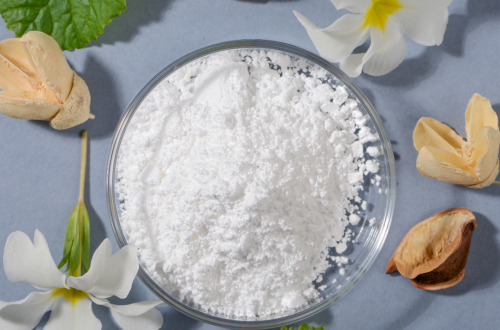
Foundation ingredients Part I: What do they mean?
Are you looking for that perfect foundation or bb cream for your dark skin tone? You know you want to find something beneficial for your skin, or at least, something that won’t give you a bad reaction. But whenever you take a look at the ingredients, you may often face a long, intimidating list that has little to no meaning to you. In this first cosmetics ingredients post, you’ll learn about some of the different categories or classes of ingredients found in foundations and what their purposes are.
Emollients
The main purpose of these types of ingredients is to soften, moisturize, smooth and nourish the skin. This ingredient type is particularly important when in comes to dark skin as darker skin tones can appear ashy when there is a lack of moisture. Additionally, consistently dehydrated skin can eventually lead to visible damage in dark skin. The emollient used in a foundation can determine how the foundation feels on the skin. There are a few different subcategories of emollients that work in different ways:
- Humectants: These particular ingredients attract water from the surrounding environment and thus bring moisture to the skin.
- Occlusives: These ingredients form a film or barrier over the skin thus trapping moisture inside (or outside) the skin.
Emulsifiers/Surfactants
Oftentimes, foundations contain ingredients that don’t naturally mix together (such as oils and water). Therefore, emulsifiers and/or surfactants are necessary. The function of surfactants/emulsifiers is to blend and stabilize immiscible ingredients together by lowering their surface tension. The resulting blend is called an emulsion.

Preservatives
Preservatives are necessary to prolong the shelf-life of your product. Most importantly, they protect your health by preventing the growth of pathogenic bacteria, molds, and fungi inside of your product. Preservatives are an important addition to products that contain water.
Actives
These are not always included in foundations, but when included they can support skin health and improve its appearance. These biologically active ingredients often address particular skin issues. This is particularly important to women of colour because melanin producing cells in darker skin can be more sensitive to inflammation and injury. This often results in noticeable skin issues such as discoloration and hyperpigmentation. Therefore, if you wear foundation daily, selecting one that contains ingredients known to sooth, repair, and/or protect your skin would be beneficial.
Pigments
Pigments are necessary to give the foundation its colour. They are added in varying proportions and ratios to produce the wide variety of foundation shades and colours that are out there. Also, the percentage of pigment added determines the coverage level. A foundation can be sheer, light, medium, or full coverage.
Fragrance
A fragrance is typically added to make the foundation more aesthetically pleasing. Addition of a scent masks any unpleasant chemical smells that the ingredients might have.
In the next post of this series, I will go over some common ingredients from the above categories that are added to foundations. I will discuss which ingredients would most benefit your dark skin and if there are others that you should steer clear of.





